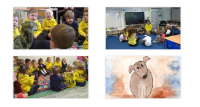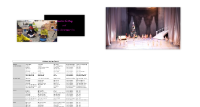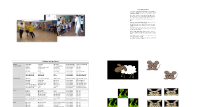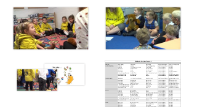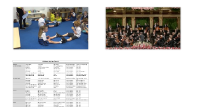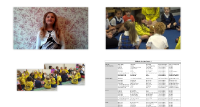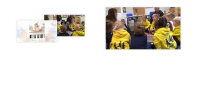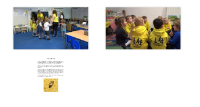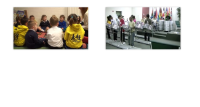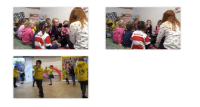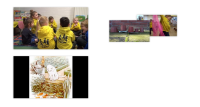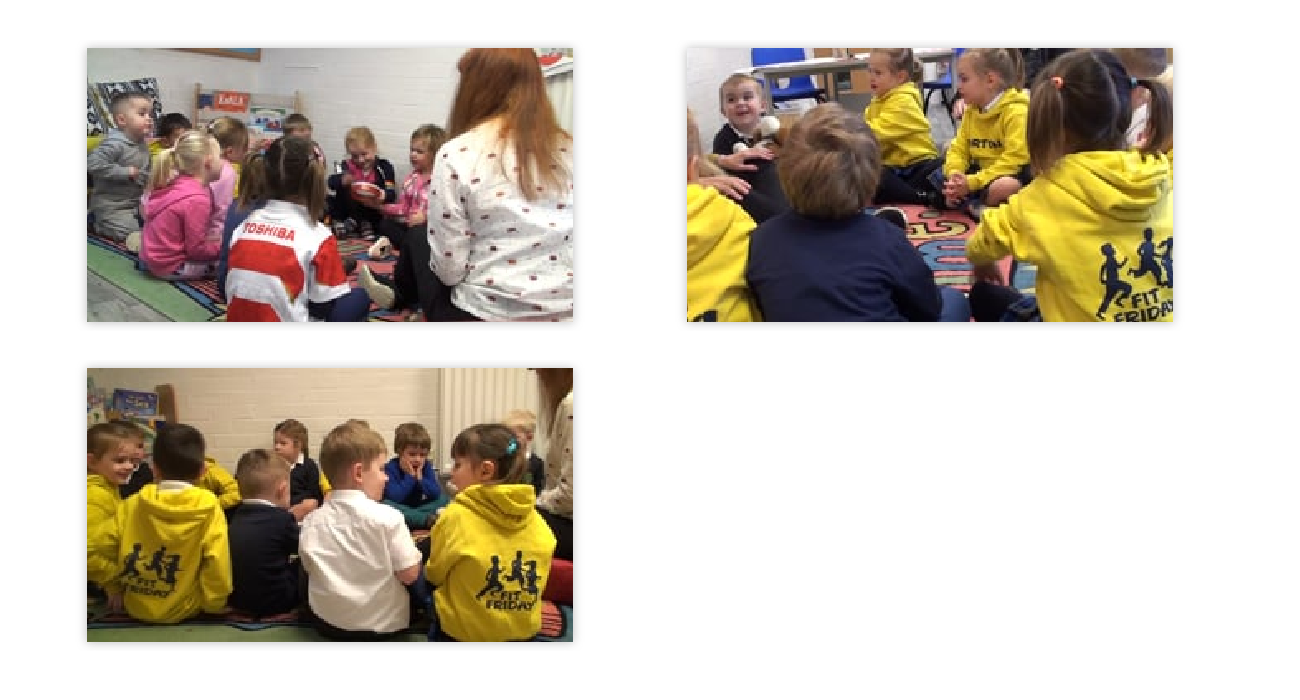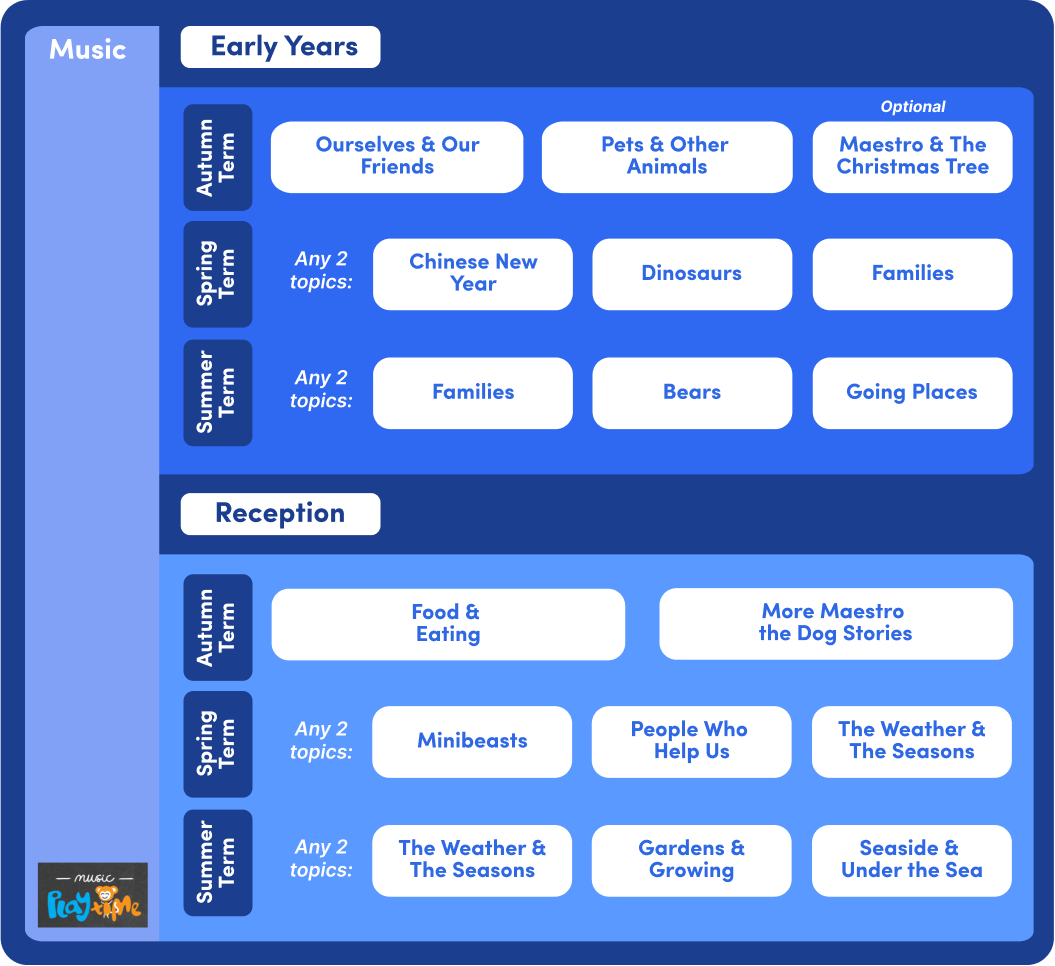Families Level: Early Years
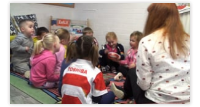
Can You Pass the Little Drum?
We often need to ask, 'Can you pass the ...' when we eat meals with our families or friends. Here's a passing song for you:
Find Your Animal Family (timbre)
First everyone practises making animal noises: baaa, moo, woof miaow, squeak, hiss, oink.
The teacher whispers to each child which animal they are. Every child belongs to an animal family. The children walk around the room making their animal noise until the find their 'family', when they must sit down with their group.
Next, the teacher sing-songs: Who are you? The children reply in sing-song-voices: We are the cows! (for example). An easy way to show the children how to reply is to model what to do - first being the teacher asking the question and then pretending to be a child giving the answer.

The Alphabet Family
The letters belong to the alphabet family! Here's a new alphabet song, specially composed for those who are tired of the usual one!
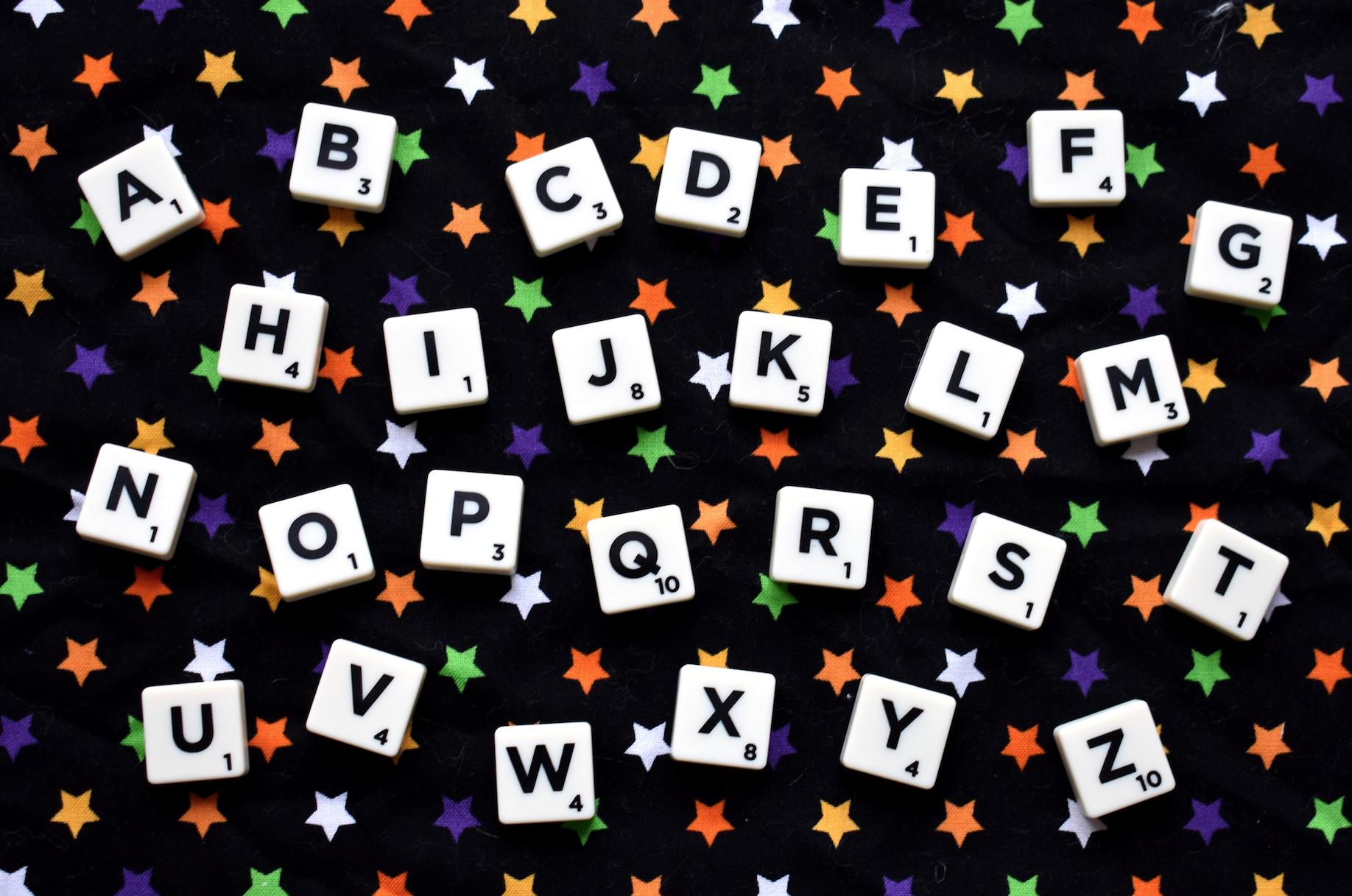

Woolly Tails!
Baa Baa Black Sheep

Mary Had a Little Lamb
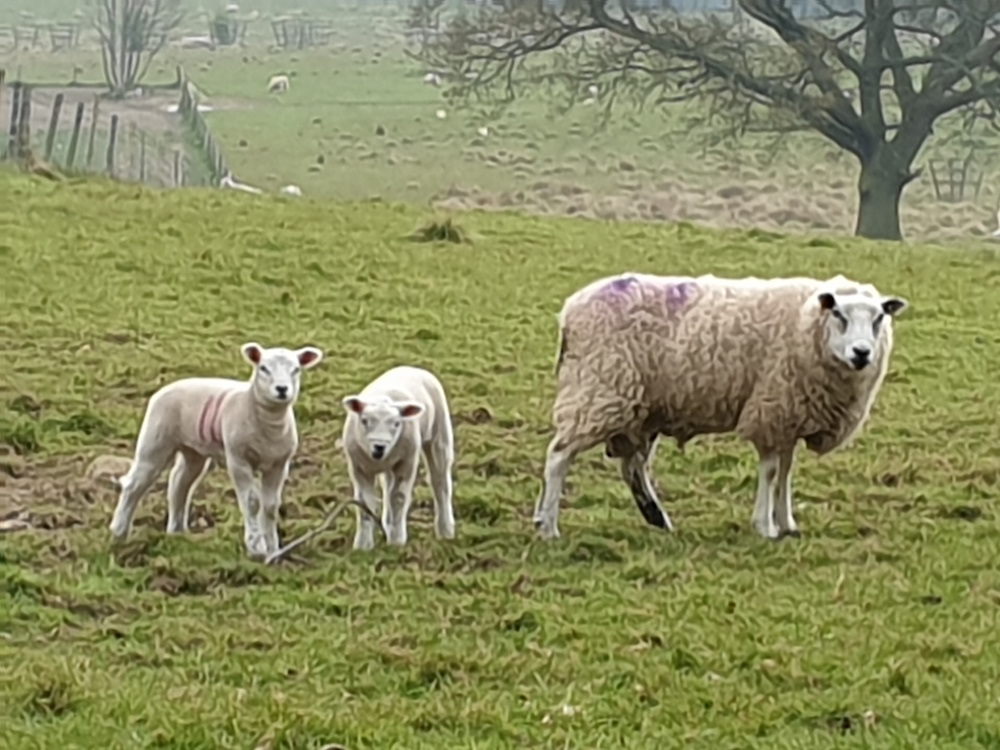
Clap our Hands for Baby
Does anyone have a baby at home? How about twins? This is a poem for the teacher to say while the children do the actions. Aim to say the words rhythmically, or use yoursing-song voice, and model doing the actions in time with the pulse. The children copy the actions in time with the pulse. It's best to sit on the floor as young children seem to find it easier to stamp their feet without worrying about balancing on one leg! Remember to make the verses sound different in character.
- Verse 1 - quietly - clap hands
- Verse 2 - louder - stamp feet
- Verse 3 - sweetly and slowly - rock arms
- Clap our hands for baby
- Clap them this way
- This way, that way
- Clap them this way
- __
- Stamp our feet for baby
- Stamp them this way
- This way, that way
- Stamp them this way
- __
- Rock our arms for baby
- Rock them this way
- This way, that way
- Rock them this way

The Music Dog Goes Round and Round (pulse)
Our pets are part of the family too! Here's a passing game and song about Maestro the Music Dog. I start off here with tapping the pulse on knees and many children eventually learn to pass the music dog in time with the pulse of the music.
Instrument Twins (timbre)
You need a set of identically paired instruments that make a different sound (timbre) eg two drums, two wood blocks, two scrapers, two maracas. Supposing you have six pairs of instruments, give one of each pair to a child, invite them to explore the sound the instruments make and help the children to name them all.
Put the other set of identical instruments behind a screen, keeping the others in the circle. One child hides behind a screen and plays an instrument from the identical set.
Ask the children 'Which instrument was that?' (invite hands up). Ask both children holding the identical instruments to make a sound on them again. Then a different child hides behind the screen and the game begins again.
Organisational hint - ask the children who have already played to put the instrument behind their back so they are not tempted to continue playing it once you have moved the game on to the next pair.

Copy Cats
Copy Cat Mirrors (structure)
This is a game to be played standing up, facing the children. The aim is for the children to copy you, as if in a mirror, as you do a sequence of movements. First you do one action and the children copy it after you, then you do a different action for them to copy. Next you do both actions over and over again without stopping as the children copy you at the same time, as if in a mirror. Build up to four movements, then do them again without stopping.
Copy Cat Sounds (dynamics, pitch, duration)
Next, you might do some movements with sounds, such as clapping and stamping, as well as some without sounds, such as touching your shoulders. You could vary loud and quiet dynamics, high-pitched and low-pitched vocal sounds and long-duration and short-duration sounds.

Long and Short Sounds (duration)
Start with modelling short and long sounds, before asking the children to experiment, with a partner, making short and long sounds. Next you could teach the song, Some sounds are Short. Finally, ask the children to take turns with their partner at making short and long sounds, first with body sounds and voices and later with instruments.
- Some sounds are short
- Some sounds are long
- Which sound will you make
- After the song?
Music Corner Sorting activity (timbre, dynamics, duration)
Pairs of children go to the music corner, with an adult, and sort the instruments into families. It's an open-ended choice because they can base their sorting on similar-timbre sounds, on whether the instruments can play short or long sounds, or make loud or quiet sounds, or on what they are made of eg wood or metal.
Conversations (timbre, dynamics, tempo and PSED link)
What kinds of conversations can you have with your friends, teachers, mums, dads?
Role Play In pairs, the children have a pretend conversation using puppets. The teacher could model this first, using a puppet in either hand.
With their partners, the children then make their puppets have a conversation by playing an instrument instead of talking to each other. Were the puppets asking questions, just chatting, or arguing? How does your partner's puppet feel about ...?
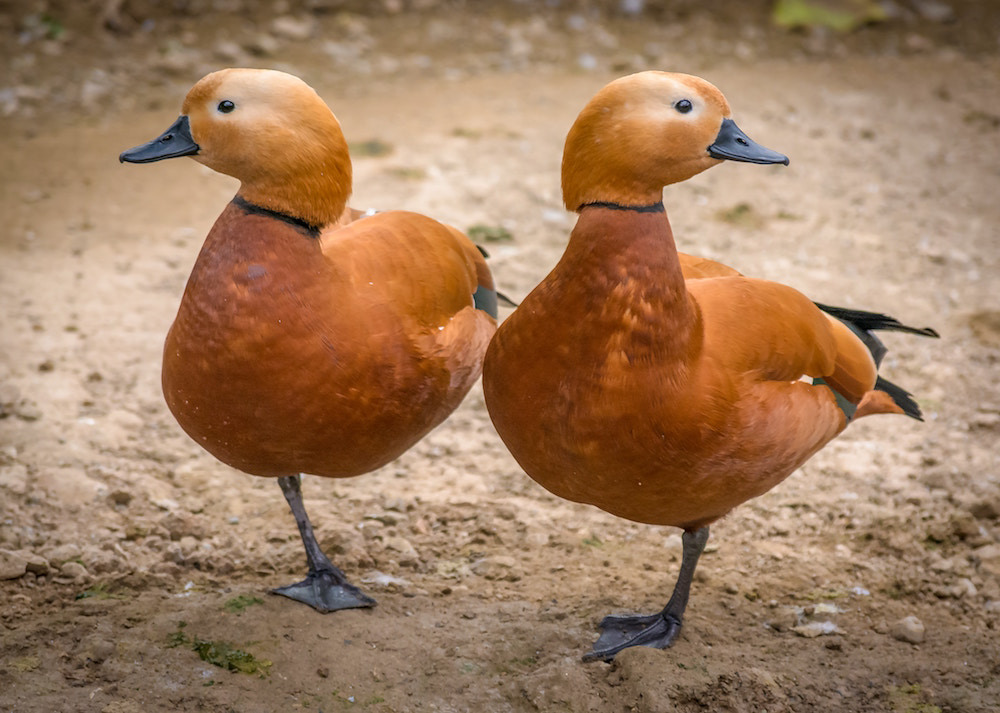

Rock-a-Bye Maybe (tempo)
This little baby will not go to sleep! First let the children listen to the music and ask them if they recognise any of the tunes. Then they children move around the room, changing their speed as the speed of the music changes. Ask the children why they think the music is called Rock-a-Bye-Maybe? Encourage them to use describing words such as fast, slow, loud, quiet, smooth, jumpy.

Berceuse from Dolly Suite by Faure (mood & character in dynamics & tempo)
The title of this music is Berceuse, which is the French word for lullaby. It's played here as a piano duet by brothers, Lucas and Arthur Jussen. The children each stand in a hoop, which is their 'baby's cradle', and make expressive movements to the music using their floaty scarf. They should move very quietly and not too quickly to the music. You can buy a set of different coloured dance scarves very cheaply or, if you cut up a large piece of chiffon, each strip makes a floaty scarf.
Lullaby Corner (dynamics, tempo)
Put out a range of tuned and untuned percussion instruments in the music corner. In small groups, the children work in pairs, taking turns to make Lullaby sounds that are quiet and sleepy and Wake Up! sounds that are louder and quicker. They might then show the other children in the group, who guess whether the sound is Lullaby or Wake Up!

The difference game
You need a set of two-dimensional, geometric shapes that have several differences eg large and small, thick and thin, different colours.
The children match the shapes by putting them into families of, for example, all the blue triangles, small thick circles, all the thin shapes. Extension work involves more specific differences eg 'Find a circle that has only one difference from this one'.
Revisit Rock-a-Bye-Maybe?
The music in the Listening section of this unit had lots of differences. Listen again with the children and ask if they can put hands up when they hear more than one difference eg slower and also quieter.
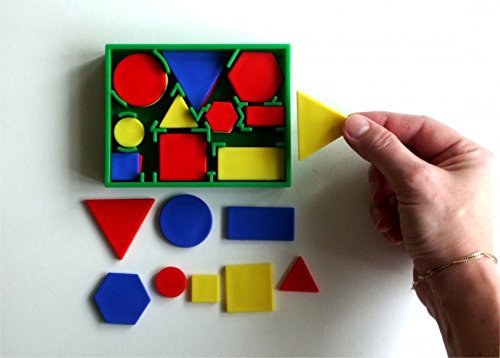

Can You Pass the Little Drum?
We often need to ask, 'Can you pass the ...' when we eat meals with our families or friends. Here's a passing song for you:
Find Your Animal Family (timbre)
First everyone practises making animal noises: baaa, moo, woof miaow, squeak, hiss, oink.
The teacher whispers to each child which animal they are. Every child belongs to an animal family. The children walk around the room making their animal noise until the find their 'family', when they must sit down with their group.
Next, the teacher sing-songs: Who are you? The children reply in sing-song-voices: We are the cows! (for example). An easy way to show the children how to reply is to model what to do - first being the teacher asking the question and then pretending to be a child giving the answer.

The Alphabet Family
The letters belong to the alphabet family! Here's a new alphabet song, specially composed for those who are tired of the usual one!


Woolly Tails!
Baa Baa Black Sheep

Mary Had a Little Lamb

Clap our Hands for Baby
Does anyone have a baby at home? How about twins? This is a poem for the teacher to say while the children do the actions. Aim to say the words rhythmically, or use yoursing-song voice, and model doing the actions in time with the pulse. The children copy the actions in time with the pulse. It's best to sit on the floor as young children seem to find it easier to stamp their feet without worrying about balancing on one leg! Remember to make the verses sound different in character.
- Verse 1 - quietly - clap hands
- Verse 2 - louder - stamp feet
- Verse 3 - sweetly and slowly - rock arms
- Clap our hands for baby
- Clap them this way
- This way, that way
- Clap them this way
- __
- Stamp our feet for baby
- Stamp them this way
- This way, that way
- Stamp them this way
- __
- Rock our arms for baby
- Rock them this way
- This way, that way
- Rock them this way

The Music Dog Goes Round and Round (pulse)
Our pets are part of the family too! Here's a passing game and song about Maestro the Music Dog. I start off here with tapping the pulse on knees and many children eventually learn to pass the music dog in time with the pulse of the music.
Instrument Twins (timbre)
You need a set of identically paired instruments that make a different sound (timbre) eg two drums, two wood blocks, two scrapers, two maracas. Supposing you have six pairs of instruments, give one of each pair to a child, invite them to explore the sound the instruments make and help the children to name them all.
Put the other set of identical instruments behind a screen, keeping the others in the circle. One child hides behind a screen and plays an instrument from the identical set.
Ask the children 'Which instrument was that?' (invite hands up). Ask both children holding the identical instruments to make a sound on them again. Then a different child hides behind the screen and the game begins again.
Organisational hint - ask the children who have already played to put the instrument behind their back so they are not tempted to continue playing it once you have moved the game on to the next pair.

Copy Cats
Copy Cat Mirrors (structure)
This is a game to be played standing up, facing the children. The aim is for the children to copy you, as if in a mirror, as you do a sequence of movements. First you do one action and the children copy it after you, then you do a different action for them to copy. Next you do both actions over and over again without stopping as the children copy you at the same time, as if in a mirror. Build up to four movements, then do them again without stopping.
Copy Cat Sounds (dynamics, pitch, duration)
Next, you might do some movements with sounds, such as clapping and stamping, as well as some without sounds, such as touching your shoulders. You could vary loud and quiet dynamics, high-pitched and low-pitched vocal sounds and long-duration and short-duration sounds.

Long and Short Sounds (duration)
Start with modelling short and long sounds, before asking the children to experiment, with a partner, making short and long sounds. Next you could teach the song, Some sounds are Short. Finally, ask the children to take turns with their partner at making short and long sounds, first with body sounds and voices and later with instruments.
- Some sounds are short
- Some sounds are long
- Which sound will you make
- After the song?
Music Corner Sorting activity (timbre, dynamics, duration)
Pairs of children go to the music corner, with an adult, and sort the instruments into families. It's an open-ended choice because they can base their sorting on similar-timbre sounds, on whether the instruments can play short or long sounds, or make loud or quiet sounds, or on what they are made of eg wood or metal.
Conversations (timbre, dynamics, tempo and PSED link)
What kinds of conversations can you have with your friends, teachers, mums, dads?
Role Play In pairs, the children have a pretend conversation using puppets. The teacher could model this first, using a puppet in either hand.
With their partners, the children then make their puppets have a conversation by playing an instrument instead of talking to each other. Were the puppets asking questions, just chatting, or arguing? How does your partner's puppet feel about ...?


Rock-a-Bye Maybe (tempo)
This little baby will not go to sleep! First let the children listen to the music and ask them if they recognise any of the tunes. Then they children move around the room, changing their speed as the speed of the music changes. Ask the children why they think the music is called Rock-a-Bye-Maybe? Encourage them to use describing words such as fast, slow, loud, quiet, smooth, jumpy.

Berceuse from Dolly Suite by Faure (mood & character in dynamics & tempo)
The title of this music is Berceuse, which is the French word for lullaby. It's played here as a piano duet by brothers, Lucas and Arthur Jussen. The children each stand in a hoop, which is their 'baby's cradle', and make expressive movements to the music using their floaty scarf. They should move very quietly and not too quickly to the music. You can buy a set of different coloured dance scarves very cheaply or, if you cut up a large piece of chiffon, each strip makes a floaty scarf.
Lullaby Corner (dynamics, tempo)
Put out a range of tuned and untuned percussion instruments in the music corner. In small groups, the children work in pairs, taking turns to make Lullaby sounds that are quiet and sleepy and Wake Up! sounds that are louder and quicker. They might then show the other children in the group, who guess whether the sound is Lullaby or Wake Up!

The difference game
You need a set of two-dimensional, geometric shapes that have several differences eg large and small, thick and thin, different colours.
The children match the shapes by putting them into families of, for example, all the blue triangles, small thick circles, all the thin shapes. Extension work involves more specific differences eg 'Find a circle that has only one difference from this one'.
Revisit Rock-a-Bye-Maybe?
The music in the Listening section of this unit had lots of differences. Listen again with the children and ask if they can put hands up when they hear more than one difference eg slower and also quieter.

